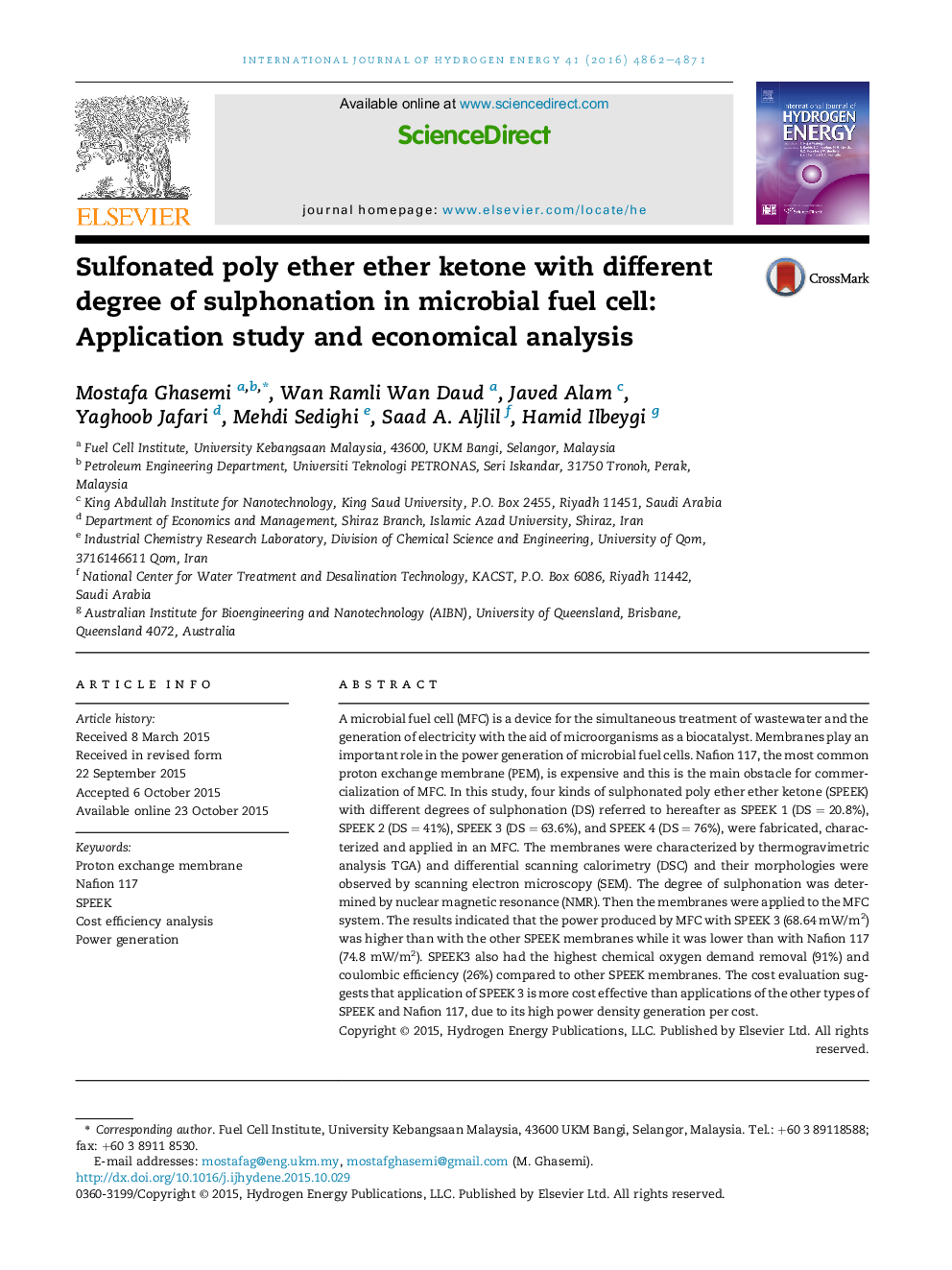| Article ID | Journal | Published Year | Pages | File Type |
|---|---|---|---|---|
| 1271174 | International Journal of Hydrogen Energy | 2016 | 10 Pages |
•Fabrication of SPEEK with different degrees of sulfonation.•Application studies of them in MFC.•Finding the optimized SPEEK for MFC.•Economical comparison of SPEEK and Nafion 117.
A microbial fuel cell (MFC) is a device for the simultaneous treatment of wastewater and the generation of electricity with the aid of microorganisms as a biocatalyst. Membranes play an important role in the power generation of microbial fuel cells. Nafion 117, the most common proton exchange membrane (PEM), is expensive and this is the main obstacle for commercialization of MFC. In this study, four kinds of sulphonated poly ether ether ketone (SPEEK) with different degrees of sulphonation (DS) referred to hereafter as SPEEK 1 (DS = 20.8%), SPEEK 2 (DS = 41%), SPEEK 3 (DS = 63.6%), and SPEEK 4 (DS = 76%), were fabricated, characterized and applied in an MFC. The membranes were characterized by thermogravimetric analysis TGA) and differential scanning calorimetry (DSC) and their morphologies were observed by scanning electron microscopy (SEM). The degree of sulphonation was determined by nuclear magnetic resonance (NMR). Then the membranes were applied to the MFC system. The results indicated that the power produced by MFC with SPEEK 3 (68.64 mW/m2) was higher than with the other SPEEK membranes while it was lower than with Nafion 117 (74.8 mW/m2). SPEEK3 also had the highest chemical oxygen demand removal (91%) and coulombic efficiency (26%) compared to other SPEEK membranes. The cost evaluation suggests that application of SPEEK 3 is more cost effective than applications of the other types of SPEEK and Nafion 117, due to its high power density generation per cost.
